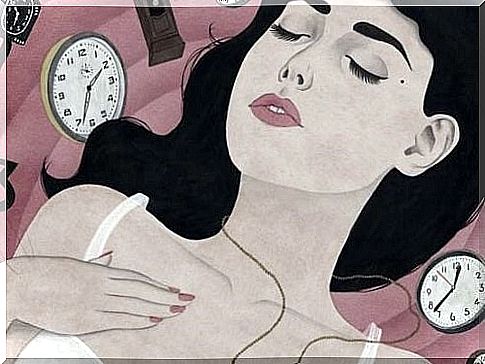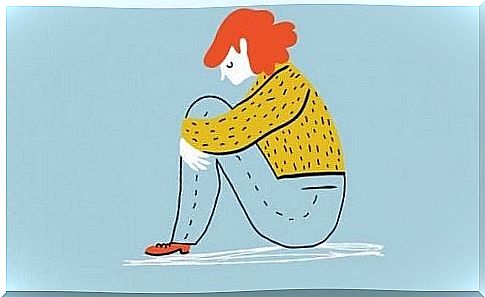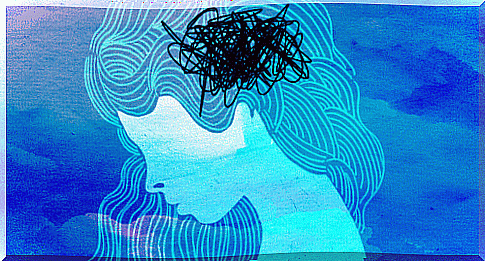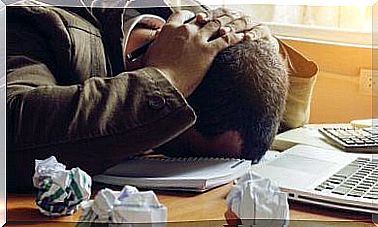These Are The 5 Differences Between Sadness And Depression

Talking about psychology has become popular these days. However, the way we talk about psychology is not always correct. After all, we tend to talk about psychology while making the wrong interpretations. One of the classic examples is the difficulty with which we distinguish between sadness and depression.
The popular use of the word “depression” has led to confusion about the condition. In fact, it has even given rise to contempt.
Using the word depression instead of sadness and vice versa causes many problems. Some people find it easy to just say they are depressed rather than sad. After all, the first word sounds more technically or scientifically correct. However, we often associate sadness with human weakness.
There are many differences between sadness and depression. The first and most important difference is that grief is temporary. On the other hand, depression is a condition. So it must be treated. For this reason it is important that we know the difference.
The differences between sadness and depression
1. The duration: a deciding factor
The duration of psychological phenomena is not something that we can measure exactly. Nevertheless, the fact is that the duration of the problem can allow for a more precise approach in treatment. An emotion, by definition, has a short duration.
One of the biggest differences between sadness and depression is that sadness is a temporary, passing emotion. However, depression is fairly chronic unless a psychologist can correct the problem.
According to the diagnostic criteria, a person should experience grief for six months without interruption. Only then can a psychologist begin to suspect that a patient has depression.

2. Unwillingness: a determining factor
In fact, unwillingness is having problems with or resisting action. When a person is sad, they will feel less motivated to carry out their normal daily activities. Desperation may diminish your social life.
It can also cause you to spend less time at work or perform fewer tasks than you usually do. However, you are still quite active.
On the other hand, a depressed person is overwhelmed by this discouragement. They completely neglect their obligations. They may also ignore the attempts of others to help them start. They regularly talk about how they feel tired.
That fatigue ultimately reduces the number of activities they do throughout the day or week. In clinical terms, depression presents a similar picture to that of a person with an anxiety disorder.
3. The degree of seclusion
Another difference between sadness and depression is reflected in the degree of isolation that the individuals exhibit. For a sad person, it is normal to look for close people with whom they can talk about how they are feeling.
It is also normal for them to seek comfort from others. However, they can also maintain a degree of social isolation. In this regard, it will depend on the person’s personality and the strategies they master.
However, depressed individuals will constantly reject contact with others. They keep their feelings to themselves. Even though they don’t feel well alone and prefer to spend time with others, they will still isolate themselves. However, they do not seek help. Gradually they even become isolated from their closest friends and family.

4. The level of functioning
A person’s level of functioning is one factor that indicates a major difference between sadness and depression. In the case of a person who is feeling sad, his mood changes only slightly in his daily habits.
The person may become less outspoken and more reserved. In fact, he still performs all the activities that he would normally do throughout the day.
However, when a person suffers from depression, his usual routine often changes. He has a hard time fulfilling his duties at work and at home. In addition, he also has problems coping with family, social and emotional obligations.
So it’s common to see a depressed person repeatedly looking for excuses to hide their lack of commitment or failure to keep appointments. He just has a hard time adjusting to a “normal” routine.

5. Despair
Individuals can be sad for various reasons. However, the reason almost always has to do with a loss or a worrisome situation that they find difficult to deal with. The individuals experience emotional pain.
Yet they can also laugh, look to the future and make new plans. They may not have answers. However, they feel that a brighter and more hopeful future is possible.
In the case of depressed persons, all they have is despair. When they look to the future, everything looks bleak. They feel no interest or desire and do not have the ability to think about their future. How can they look to the future when the present is already too much for them to handle?
As we can see, there are important and major differences between sadness and depression. A mental health professional should treat depression. Depression is not a disorder that will go away on its own. It therefore requires specialized intervention.









